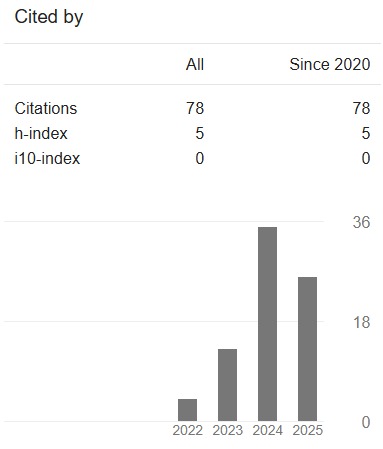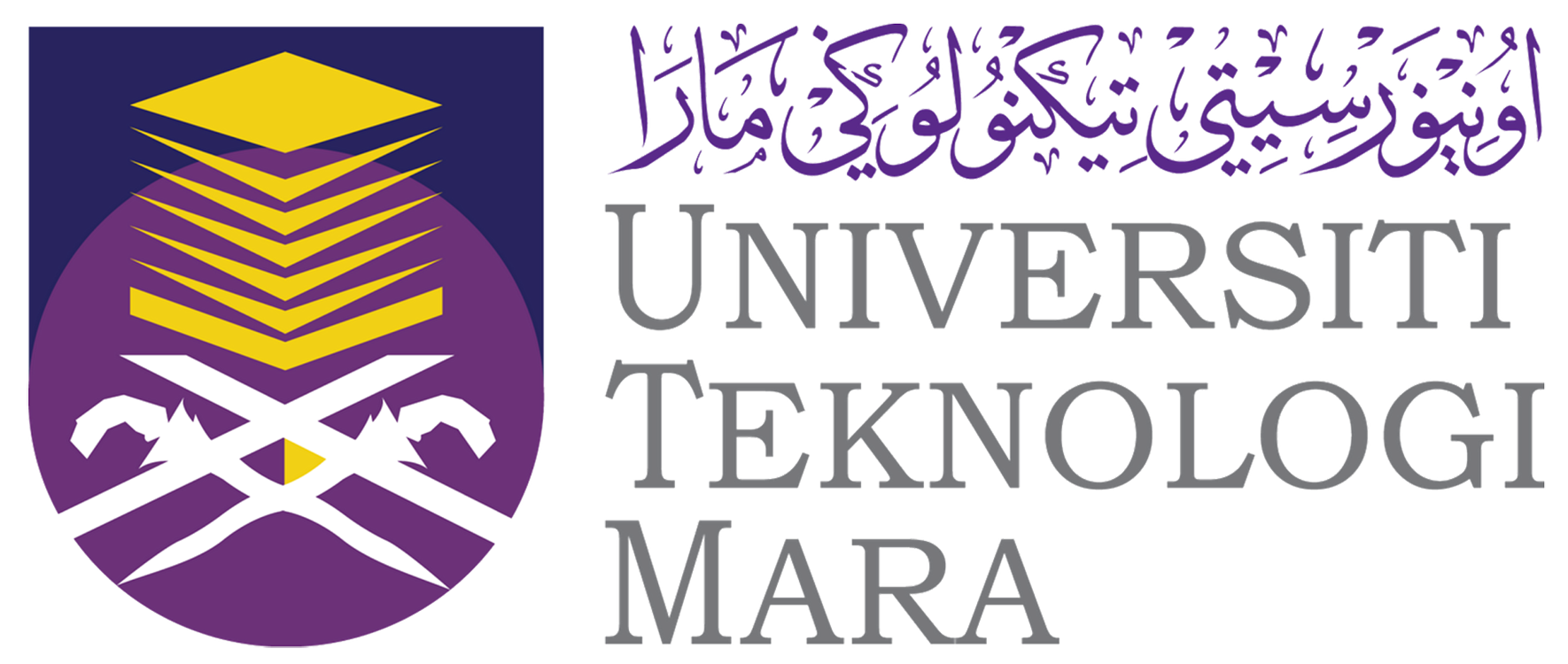Comparative Study of Surface Quality on Flat and Curved UHMWPE Surfaces Using Robotic Milling
DOI:
https://doi.org/10.24191/jaeds.v5i2.139Keywords:
Surface Geometry, Surface Roughness, Robotic Milling, UHMWPEAbstract
In the context of robotic machining for advanced thermoplastics, surface geometry plays a critical role in determining surface quality.This study investigates the effect of surface geometry on the surface quality of ultra-high molecular weight polyethylene (UHMWPE) during robotic milling. Flat and curved geometries were machined using a 6-axis KUKA KR 120 R2700-2 F at spindle speeds of 6500 and 9500 RPM. Surface roughness parameters (Ra, Rq, Rz) were evaluated through a Mitutoyo SJ-410 stylus profilometer to assess the resulting surface quality. The results show that increasing spindle speed improved surface finish across both geometries. Curved surfaces consistently achieved lower roughness values compared to flat surfaces, with Ra improved by 27.5% (from 1.669 µm to 1.209 µm) and Rz by 33.1% (from 8.778 µm to 5.877 µm) on curved geometries. Conversely, flat surfaces experienced higher roughness but Ra still showed improvement by 29% (from 2.331 µm to 1.656 µm) and Rz by 36.2% (from 11.765 µm to 7.509 µm) with increased spindle speed. Despite fluctuations, all roughness values remained acceptable for industrial use, particularly in sliding components, structural spacers, and food-grade parts. The findings emphasize the importance of considering surface geometry in tool path planning and thermal compensation strategies for high-precision robotic milling of UHMWPE.
Downloads
References
B. Zhao et al., “Collaborative manufacturing technologies of structure shape and surface integrity for complex thin-walled components of aero-engine: Status, challenge and tendency,” Chinese Journal of Aeronautics, vol. 36, no. 7, pp. 1–24, Jul. 2023, doi: 10.1016/j.cja.2023.02.008.
M. Soori, M. Asmael, A. Khan, and N. Farouk, “Minimization of surface roughness in 5-axis milling of turbine blades,” Mechanics Based Design of Structures and Machines, vol. 51, no. 9, pp. 5213–5230, Sep. 2023, doi: 10.1080/15397734.2021.1992779.
Q. Wang, W. Xu, W. Li, and H. Ding, “A Novel Robot Positioning Accuracy Calibration Method Integrating Levenberg-Marquardt and Differential Evolution Algorithm,” in 2024 3rd International Conference on Artificial Intelligence and Computer Information Technology (AICIT), IEEE, Sep. 2024, pp. 1–7. doi: 10.1109/AICIT62434.2024.10730526.
Y. Yin, D. Gao, K. Deng, and Y. Lu, “Vision-based autonomous robots calibration for large-size workspace using ArUco map and single camera systems,” Precis Eng, vol. 90, pp. 191–204, Oct. 2024, doi: 10.1016/j.precisioneng.2024.08.010.
N. A. Nadeau, I. A. Bonev, and A. Joubair, “Impedance Control Self-Calibration of a Collaborative Robot Using Kinematic Coupling,” Robotics, vol. 8, no. 2, p. 33, Apr. 2019, doi: 10.3390/robotics8020033.
S. Ma et al., “Robot machining accuracy control based on terminal closed-loop compensation,” Advances in Engineering Technology Research, vol. 13, no. 1, p. 664, Apr. 2025, doi: 10.56028/aetr.13.1.664.2025.
H. Salazar, G. Yoshimoto, L. Vinces, and J. Oliden, “A development of an automated system for the transportation and cutting of raw glass using a suction gripper and a Fletcher cutter with a KUKA robot,” in 2023 Congreso Internacional de Innovación y Tendencias en Ingeniería (CONIITI), IEEE, Oct. 2023, pp. 1–6. doi: 10.1109/CONIITI61170.2023.10324221.
A. Sturov and N. Chashchin, “Machining composite material by a robotic complex based on KUKA KR210 robot,” Proceedings of Irkutsk State Technical University, vol. 23, no. 4, pp. 743–750, Aug. 2019, doi: 10.21285/1814-3520-2019-4-743-750.
N. Villarrazo, Á. Sáinz de la Maza, S. Caneda, L. Bai, O. Pereira, and L. N. López de Lacalle, “Effect of tool orientation on surface roughness and dimensional accuracy in ball end milling of thin-walled blades,” The International Journal of Advanced Manufacturing Technology, vol. 136, no. 1, pp. 383–395, Jan. 2025, doi: 10.1007/s00170-024-14523-6.
A. Agarwal and K. A. Desai, “Effect of component configuration on geometric tolerances during end milling of thin-walled parts,” The International Journal of Advanced Manufacturing Technology, vol. 118, no. 11–12, pp. 3617–3630, Feb. 2022, doi: 10.1007/s00170-021-08185-x.
X. Guo, R. Wang, S. Zhong, and X. Xu, “Dual-sided co-machining scheme optimization for thin-wall components with complex geometry,” J Intell Manuf, Nov. 2024, doi: 10.1007/s10845-024-02517-w.
J. Deng, F. Wang, R. Fu, Y. Lin, Q. He, and X. Ma, “Prediction of time-varying dynamics and chatter stability analysis for surface milling of thin-walled curved CFRP workpiece,” J Mater Process Technol, vol. 322, p. 118186, Dec. 2023, doi: 10.1016/j.jmatprotec.2023.118186.
C. Chen, C. Wu, T. Zhang, and S. Y. Liang, “3D curved surface milling modeling for the topography simulation and surface roughness prediction,” J Manuf Process, vol. 137, pp. 150–165, Mar. 2025, doi: 10.1016/j.jmapro.2025.02.003.
C. Wang, W. Wang, Y. Gao, and X. Li, “Parameters Optimization of Multipass Milling Process by an Effective Modified Particle Swarm Optimization Algorithm,” Discrete Dyn Nat Soc, vol. 2022, no. 1, Jan. 2022, doi: 10.1155/2022/8545739.
B. Wu, W. Chu, B. Xia, and Y. Zhou, “Construction of Spring-Shaped UHMWPE Fiber-Based Soft Actuators with Stable/Fast Actuating Response and Large Actuating Stroke,” ACS Appl Polym Mater, vol. 6, no. 9, pp. 5216–5225, May 2024, doi: 10.1021/acsapm.4c00384.
S. K and R. C, “Experimental study of abrasive water jet drilling parameters on UHMWPE for biomedical implant applications,” Materials and Manufacturing Processes, vol. 39, no. 15, pp. 2192–2207, Nov. 2024, doi: 10.1080/10426914.2024.2395005.
E. Doğankaya, M. Kahya, and H. Özgür Ünver, “Abrasive water jet machining of UHMWPE and trade-off optimization,” Materials and Manufacturing Processes, vol. 35, no. 12, pp. 1339–1351, Sep. 2020, doi: 10.1080/10426914.2020.1772486.
A. Hace, “Toward Optimal Robot Machining Considering the Workpiece Surface Geometry in a Task-Oriented Approach,” Mathematics, vol. 12, no. 2, p. 257, Jan. 2024, doi: 10.3390/math12020257.
Z. ZHU et al., “High precision and efficiency robotic milling of complex parts: Challenges, approaches and trends,” Chinese Journal of Aeronautics, vol. 35, no. 2, pp. 22–46, Feb. 2022, doi: 10.1016/j.cja.2020.12.030.
D. J. Whitehouse, Handbook of Surface Metrology. Boca Raton: Routledge, 2023. doi: 10.1201/9780203752609.
“Surface Finish Parameters I: Amplitude, Spacing, Hybrid, and Shape,” in Computational Surface and Roundness Metrology, London: Springer London, pp. 181–190. doi: 10.1007/978-1-84800-297-5_21.
N. A. Patil, J. Njuguna, and B. Kandasubramanian, “UHMWPE for biomedical applications: Performance and functionalization,” Eur Polym J, vol. 125, p. 109529, Feb. 2020, doi: 10.1016/j.eurpolymj.2020.109529.
M. Aydın and U. Köklü, “Analysis of cutting forces at different spindle speeds with straight and helical-flute tools for conventional-speed milling incorporating the effect of tool runout,” Mechanics Based Design of Structures and Machines, vol. 52, no. 2, pp. 867–893, Feb. 2024, doi: 10.1080/15397734.2022.2125878.
M. Gdula, “Empirical models for surface roughness and topography in 5-axis milling based on analysis of lead angle and curvature radius of sculptured surfaces,” Metals (Basel), vol. 10, no. 7, pp. 1–20, Jul. 2020, doi: 10.3390/met10070932.
A. C. Ramos, H. Autenrieth, T. Strauß, M. Deuchert, J. Hoffmeister, and V. Schulze, “Characterization of the transition from ploughing to cutting in micro machining and evaluation of the minimum thickness of cut,” J Mater Process Technol, vol. 212, no. 3, pp. 594–600, Mar. 2012, doi: 10.1016/j.jmatprotec.2011.07.007.
Z. Wen, G. Wang, and M. Li, “Surface morphology, burr formation, and spindle axial drift in high-speed robotic milling of complex features,” Proc Inst Mech Eng B J Eng Manuf, May 2024, doi: 10.1177/09544054241254890.
J. Varga, Š. Kender, Ľ. Kaščák, V. Rohaľ, and E. Spišák, “Evaluation of Non-Planar Tool Interaction in Milling of Shaped Surfaces Using a Copy Milling Cutter,” Applied Sciences, vol. 14, no. 1, p. 285, Dec. 2023, doi: 10.3390/app14010285.
K. Satyanarayana et al., “Optimization Of Machining Parameters of CNC Milling Operation for Material Removal Rate and Surface Roughness on En-24 Steel Using Taguchi Method,” E3S Web of Conferences, vol. 391, p. 01011, Jun. 2023, doi: 10.1051/e3sconf/202339101011.
M. Z. A. Yazid and M. Razak, “Influence of Tool Path Strategies and Pocket Geometry on Surface Roughness in Pocket Milling,” International Journal of Recent Technology and Engineering (IJRTE), vol. 9, no. 2, pp. 884–888, Jul. 2020, doi: 10.35940/ijrte.F9585.079220.
Y. Hao and Y. Liu, “Analysis of milling surface roughness prediction for thin-walled parts with curved surface,” The International Journal of Advanced Manufacturing Technology, vol. 93, no. 5–8, pp. 2289–2297, Nov. 2017, doi: 10.1007/s00170-017-0615-4.
Budi Basuki, “Effects of CNC Milling Machining Parameters on the Surface Roughness of UHMWPE Biomaterial,” Int J Res Eng Technol, vol. 07, no. 10, pp. 68–73, Oct. 2018, doi: 10.15623/ijret.2018.0710011.
A. A. Edidin, C. M. Rimnac, V. M. Goldberg, and S. M. Kurtz, “Mechanical behavior, wear surface morphology, and clinical performance of UHMWPE acetabular components after 10 years of implantation,” 2001.
S. O. Ismail, H. N. Dhakal, I. Popov, and J. Beaugrand, “Comprehensive study on machinability of sustainable and conventional fibre reinforced polymer composites,” Engineering Science and Technology, an International Journal, vol. 19, no. 4, pp. 2043–2052, Dec. 2016, doi: 10.1016/j.jestch.2016.07.010.
U. M. Dilberoglu, U. Yaman, and M. Dolen, “A comprehensive guide to milling techniques for smoothing the surfaces of 3D-printed thermoplastic parts,” Rapid Prototype J, vol. 30, no. 8, pp. 1648–1662, Aug. 2024, doi: 10.1108/RPJ-08-2023-0277.
W. D. Lestari, A. T. Danaryanto, J. Jamari, A. P. Bayuseno, and A. Nugroho, “The Effect of The Machining Process UHMWPE on The Wear Behaviour of Acetabular Cups for Hip Implants,” 2022.
Downloads
Published
How to Cite
Issue
Section
License
Copyright (c) 2025 Shukri Zakaria, Wan Nor Shela Ezwane Wan Jusoh, Mahamad Hisyam Mahamad Basri, Mohamad Irwan Yahaya, Md Razak Daud

This work is licensed under a Creative Commons Attribution 4.0 International License.








